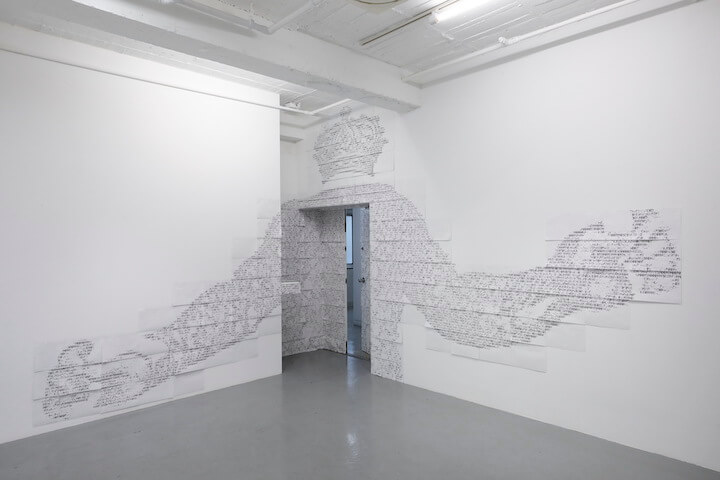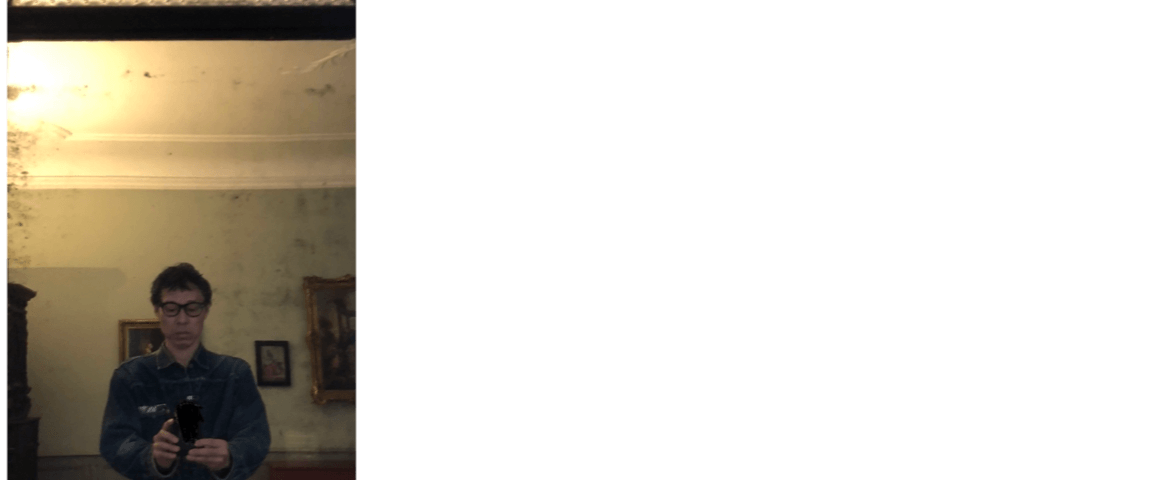magazine
Political Artifacts / Hiroshi Egaitsu
2021.3.3

Our web magazine includes articles that touch upon a wide range of ideas and offer a different perspective on the festival program. (This article has been shared from the print magazine of Kyoto Experiment 2021 Spring.)
Light and light art are not the same. Light is a physical phenomenon. Light art, on the other hand, is a human creation. Light art is born for the first time when light is controlled by the human hand. Then what exactly is the origin of light art? —Hideto Fuse, Post Human, Hozokan, 1995.
On March 11th 2011, the Great East Japan Earthquake saw an earthquake of magnitude 9.0 max. JMA intensity 7, tsunami, and an unprecedented level 7 nuclear accident. It was something not only Japan, but mankind had never experienced before. The accident, which caused many deaths, turned Fukushima and all affected areas into a tight political time and space, requiring advanced political decisions.
There are too many examples where art intervenes in political times and spaces such as these to count. Just like the Black Lives Matter movement in cities all over the US did not start only with demonstrations, but with graffiti and murals (as did the May 68 Paris riots). It is also easy to recall that the Sunflower Student Movement’s occupation of the legislative chamber of Taiwan in 2014 started with the involvement of subculture and art, such as visual communication, techno, rock and pop music. One example of this in a catastrophic time and place, with the tragedy of countless victims, would be writer and activist Susan Sontag’s controversial theatrical performance in Sarajevo after the NATO bombing in 1993.
At the exhibition Body is not Antibody by Kota Takeuchi in July 2020, photographs placed in a grid on the wall tracked the moving red light of the traffic wand Takeuchi used during his job as a security guard in a zone designated as difficult to return to, after moving to Fukushima post 2011. The vision of him making the font of the alphabet and symbols with light, somewhat obscure from a distance because of the print and material of the photographs, could be conjured, along with the different scenes – though all within the area of Fukushima – where the letterings of light were actually created by waving the traffic wand. On another wall was a huge shadow-like portrait of the king formed by a collection of symbols, printed generously on copy paper using this font, to create the frontispiece of Thomas Hobbes‛ Leviathan or The Matter, Forme and Power of a Commonwealth, Ecclesiastical and Civil. Above a bench placed in front of the final wall, was the word “ALIENS” printed out in large, also using this font. When I visited the venue SNOW Contemporary, traffic wands lay around on the floor, in the corner or propped up. The text from the artist at the entrance to the exhibition read “…the original picture is of a King depicted to be emerging from the sea and standing taller than the mountains. The King’s body is composed of the bodies of the people. In this picture, there are no people in the town in front, except for soldiers in training and two figures said to be plague doctors… I realized that the etymology of the King’s crown was the same as the virus, which inspired me to make this piece…”.
Let us return to the time and space when fear towards radioactivity was at its peak. On a sunny day towards the end of August 2011, many eyes were on the extraordinary phenomenon on Fukuichi Live Camera which was continuously streaming footage from the Fukushima Daiichi Nuclear Power Plant on YouTube, rather than TV programs that had packaged the opinionated comments of the government, TEPCO and experts. A man, seemingly a worker, wearing a white NBC suit appeared in front of a camera set inside the nuclear power plant, pointing his finger towards the center for over 20 minutes; this clearly out of the ordinary action at the hypocenter of a level 7 disaster, called for endless political and non-political interpretations in YouTube’s comment section. This phenomenon, quickly labelled the “finger pointing worker”, has been identified as an act or record in the name of contemporary art, as Kota Takeuchi stepped forward announcing himself to be the worker’s agent. In 2012, this footage was exhibited at Tokyo’s SNOW Contemporary as an indispensable factor of Open Secret, and his explorations have been shaped as exhibitions Sight Consuming Shadow (2013), Photographs turn stone monuments into mere stone, but even so people take them. (2017), and Blind Bombing (2019), before Body is not Antibody.
The Tohoku earthquake and tsunami did not only place an advanced political context upon the affected areas, but quickly engulfed the whole of Japan into a powerful political space and time. The anti-nuclear power plant demonstrations on the streets that spread to hundreds of thousands of participants straight after the meltdown, were said to have started clearly from around 2010; the monthly protests and their counteractions influencing anti-racism protests that took place on the streets of Japan, and SEALDs (Students Emergency Action for Liberal Democracy – s) after the State Secrecy Law was passed. There is a sense of urgency in how each of the parties participated or did not participate in these demonstrations and actions. However, I feel that this line of events is not only a phenomenon of the 2010s. Even if we leave out the 1980s, by the mid 1990s, that is to say around the Great Hanshin earthquake and Aum Shinrikyo, we had already been exposed as participants and witnesses to political discourse and images, to war and peace, to political talk shows, to news and commentary shows, to Asahi and Sankei Shimbun, to the discussion over Comfort women, and to the conservative and liberal – this had even extended to the Senkaku Islands, and the Kuril Islands dispute with Russia. The interpretations that flood and fill our surroundings continue to disseminate and expand in 2020 as countless fake news articles and conspiracy theories that can never be effectively debated.
If it is apparent that there is a political discourse hanging above us, is there such a thing as a political artifact? Langdon Winner, professor at Rensselaer Polytech Institute and political theorist, states that “there is no idea more provocative than the notion that technical things have political qualities” in The Whale and the Reactor. Though “the stern advice commonly given to those who flirt with the notion that technical artifacts have political qualities: What matters is not technology itself, but the social or economic system in which it is embedded”, Winner continues. “…the atomic bomb is an inherently political artifact. As long as it exists at all, its lethal properties demand that it be controlled by a centralized, rigidly hierarchical chain of command closed to all influences that might make its working unpredictable”. Winner’s argument is of the political quality of artifacts, that turn ’emergency measures under martial law’ into something ordinary through using the nuclear energy of the atomic bomb.
The performance of the finger pointing worker, suggestive of Vito Acconci’s classic visual art work Centers, reveals that both the political quality of artifacts that became apparent at the center of the level 7 disaster, and the world that controls art and light, have become exposed and share the structure of centralization. The fact that this aggregation is based on masculine principles also imitates Centers, but by passing through the circuit of YouTube and being exhibited, it becomes an Open Secret. That in itself may be powerful, but it invades into space of the internalized aesthetics of unstable tyranny. On the other hand, Body is not Antibody may seem weak, but it is like an ecosystem with creativity at the heart that does not self-conclude, and its ends have the potential of becoming the start of something else. It seems like a font design, but it also seems like an artwork using lettering expressed with light. Yet it doesn’t necessarily have to be that either. If there was to be a grandiose narrative, rather than taming and adjusting it into a template, it is probably searching for a way to sustain itself even if it opens itself to intervention.
In Hobbes’ four-part Leviathan on government integrity, an absolute sovereign by contract, there is a statement about letters as follows:
“The Invention of Printing, though ingenious, compared with the invention of Letters, is no great matter. But who was the first that found the use of Letters, is not known… A profitable Invention for continuing the memory of time past, and the conjunction of mankind, dispersed into so many, and distant regions of the Earth… As men abound in copiousness of language, so they become more wise, or mad than ordinary… For words are wise men’s counters, they do but reckon by them.”
I hesitate to even write here, that we are still bound by the light following 1945.

Hiroshi Egaitsu
Writer, DJ, adjunct lecturer at Doshisha University. Egaitsu started his career as DJ in Tokyo at the dawn of the club scene and has been involved in the street culture scene since. Director of music of the Wagner Project by Port B, translated books include Sound Art (2010).
 Check these out too!
Check these out too!
Seiichi Yamamoto Music Program curated by Seiichi Yamamoto (Theater Edition)
The Otoasobi Project & Seiko Ito OTO KYO-OTO OTTOTTO SEIKO-OTO (Day 1 AGARU / Day 2 SAGARU)
Wichaya Artamat / For What Theatre This Song Father Used to Sing (Three Days in May)
#politics #music #ecosystem
















